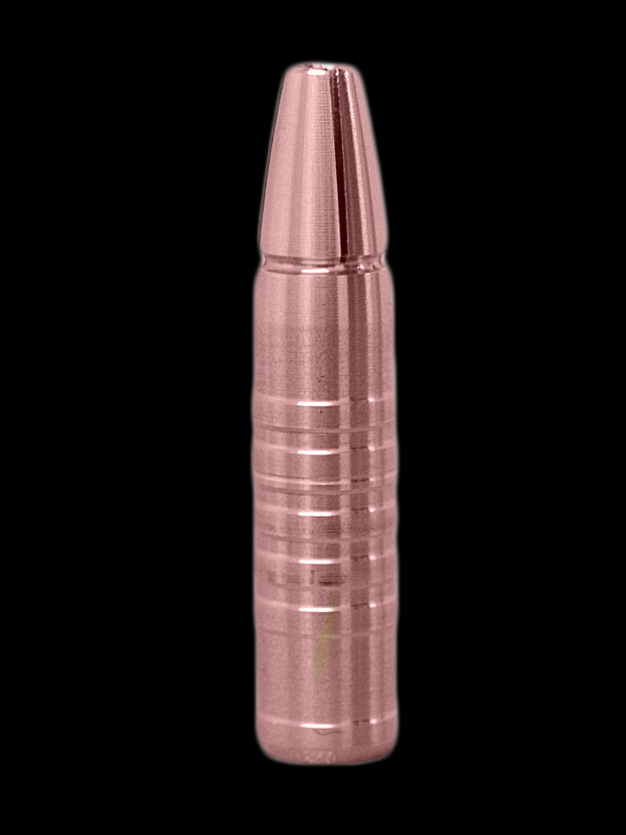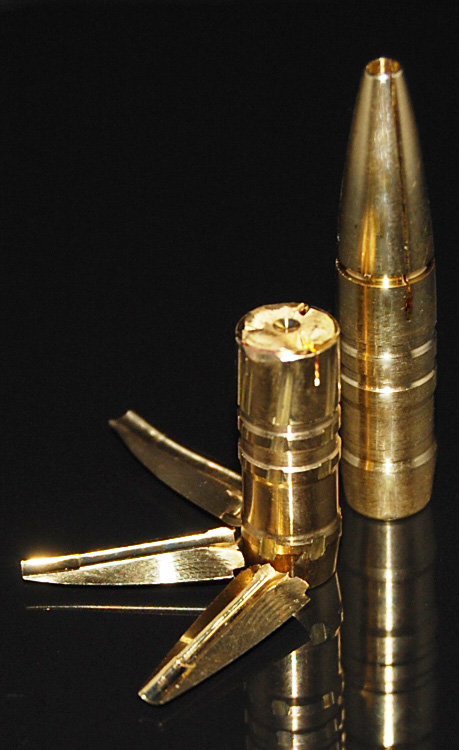Subsonic Hunting Page

For those of you that are interested in subsonic centrefire shooting, below is some general information:
Why shoot subsonic?
There are three main reasons that you may like to hunt with subsonic ammunition:
1. It is less likely to spook other gmae animals nearby;
2. It can be used for pest destruction in locations where regular supersonic ammunition may cause annoyance to nearby stock or properties; and
3. It reduces the report from a centrefire loaded with subsonic ammunition has much less effect on your hearing, when firing without hearing protection in the field.
Let's look at these three reasons in a bit more detail.
It should be understood that just because the projectile does not go supersonic, it does not mean that there will not be a report when the shot is fired. There is still the sound of a gunshot, especially with shorter barrels, but it will be considerably decreased from supersonic loads, and less noticeable at a distance from the firer. In order to significantly reduce the muzzle report, a sound suppressor is required, and since these are not currently legal for civilian use in Australia, you will just have to live with it. Still, a game animal at 100m or more, is less likely to be spooked by the report from a rifle firing subsonic ammunition, and may also be confused as to which direction the report came from. An additional benefit is that subsonic ammunition remains below the sound barrier for the entirety of its trajectory, and so is not accompanied by the characteristic sonic crack that supersonic ammunition creates until it reaches the transonic zone. The lack of this sonic crack means that animals that are missed by the first shot are likely to remain oblivious to the fact that a shot was even fired. They may also be less likely to be able to ascertain the direction of the shot, even if they hear the muzzle report.
Often, vertebrate pest controllers are called to despatch pest animals in locations that may be close to urban populations, may be small properties with workers nearby, or that may contain stock that may become anxious from repeated loud reports caused by supersonic centrefire ammunition. The ability to utilise ammunition which has a greatly reduced sound signature is of great benefit to these professionals, as it means that they are able to carry out their work without causing disturbance to personnel or stock nearby. These professionals are by necessity, also skilled in accurate shooting, and are able to place their shots precisely, often taking brain shots for immediate and humane destruction. Therefore, the lower imparted energy delivered by subsonic ammunition is generally not an important factor in terms of killing power to them.
Anyone who has fired centrefire ammunition without some form of hearing protection can attest to the effects (both temporary and long term) on your hearing. While it is foolish not to wear hearing protection at the range, it is often cumbersome and impractical to wear it in the field. This is because a hunter requires their full auditory senses when hunting, and wearing hearing protection diminishes these senses. If carried, but not worn, hearing protection can sometimes be utilised just prior to commencing firing. However, if your game only presents fleeting targets of opportunity as you move through the hunting terrain (as is the case in so many hunting situations), you may not have the opportunity to install the hearing protection before taking a shot. Subsonic ammunition creates a greatly reduced sound profile which will have significantly reduced effect on unprotected hearing and can be far more pleasant to endure in hunting situations. The long term health benefits to your hearing are greatly improved when compared against supersonic ammunition.

Projectiles for Subsonic Ammunition
Almost any projectile can be loaded with a reduced charge to fire at subsonic velocity, but some are certainly more suited to the task than others. Because subsonic ammunition leaves the barrel with very low velocity compared to supersonic projectiles, they naturally have a far more curved trajectory. In order to keep the trajectory as flat as possible, projectiles with the highest ballistic coefficient (BC) are usually selected, so that they bleed off minimal velocity over their flight path. Projectiles with the highest BCs are usually the heaviest projectiles for calibre, that have long, pointed ogives and boattails. Projectiles of this sort are usually in the 200 - 250grn weight range. Projectiles such as Sierra Matchkings, among others, have often been used in the past.
Unfortunately, these are also often the projectiles that are least suited for hunting, as they are either target projectiles or are not likely to expand at such low velocities. It is true that careful shot placement can overcome this, by utilising brain shots on game. However, where deliberate shots are precluded by rapidly disappearing game providing very short shooting times, or the ranges are extended, brain shots less viable. This means that projectiles with strong terminal effects are required.
Currently, MFS offers three projectile types that are specifically made for subsonic hunting. These are engineered to expand at the low velocities required to keep projectiles subsonic. Standard projectiles will not mushroom at these velocities, and so tend to penetrate like solids, but with minimal wound channels and low hydrostatic shock effect, and hence reduced terminal performance on game.
The projectiles that MFS offer are:
Cutting Edge Bullets 190grn Subsonic Raptor - As per other Raptor designs, the forward section of the projectile fractures into four blades which radiate out from the centre, creating four secondary wound channels;

Shop for the CEB 190grn Subsonic Raptor by clicking here.
Lehigh Projectiles 174grn Controlled Fracturing - the forward section of these projectiles fracture into four petals which separate from the base and radiate outwards, creating four secondary wound channels; and

Lehigh Projectiles 194grn Maximum Expansion - the forward section of these projectiles split into four petals which peal back to increase the frontal area, but remain attached to the base.

Shop for Lehigh subsonic projectles by clicking here.
While none of these three have BCs as high as some other heavier projectiles, their terminal effects are far superior on game, especially where body shots need to be taken. Used at moderate ranges (up to 150m), their performance on game is far superior to the projectiles that are not specifically made for hunting, and so are the preferred ethical choice to use.
Loading for Subsonic Hunting
Depending on ambient conditions, the speed of sound at sea level under standard atmospheric conditions is 1,116fps, but can easy vary between 1,060 - 1,170fps due to ambient air density. Factors affecting ambient air density are: air pressure; temperature; altitude; and humidity. The accepted velocity to load your subsonic ammunition to therefore, is generally considered to be 1,040fps, under 'normal' atmospheric conditions.
Due to the low velocities, rifles firing subsonic ammunition do not require long barrels. Indeed, generally subsonic velocities can be achieved in barrels as short as 10 inches. However, the shorter the barrel, often the larger the charge required to achieve the desired velocity. More powder equates to a larger shock wave, and hence a greater muzle report. Shorter barrels also mean that less of the powder burns in the barral and more of it burns outside the barrel, again leading to an increased muzzle report. Barrels between 16 - 18 inches long are probably ideal for rifles that are to fire subsonic ammunition only. However, if rifles are to be used with duel purpose ammunition (both subsonic and supersonic), then standard barrel lengths should prevail. If not, the muzzle velocities of your supersonic ammunition will suffer.
For cartridges that are specfically made to fire subsonic ammunition, such as .300 Whisper and .300 Blackout, powders with suitable expansion ratios are required. These include magnum pistol powders and fast burning rifle powders. As examples, powders such as AP 100, AR 2205 and AR 2207 from ADI are well suited to these applications. As suggested above, choosing a powder that achieves the desired velocity with the smallest charge, tends to produce lower muzzle reports.
While with supersonic loads, there is generally no constraint to the upper velocity (other than accuracy, and maximum pressure), the same is not true for subsonic loads. With these, there is the need to achieve a specific velocity (the previously mentioned 1,040fps target). Below this, energy and trajectory suffer further, while above this, we risk breaking the sound barrier. The narrow velocity band we are constrained to means that it is important to find exactly the right load that will consistently deliver velocities in this range. More load development than usual will likely be required, and variations to projectile seating depth should also be explored in order to fnd the load that delivers the desired velocity and accuracy in your rifle.
